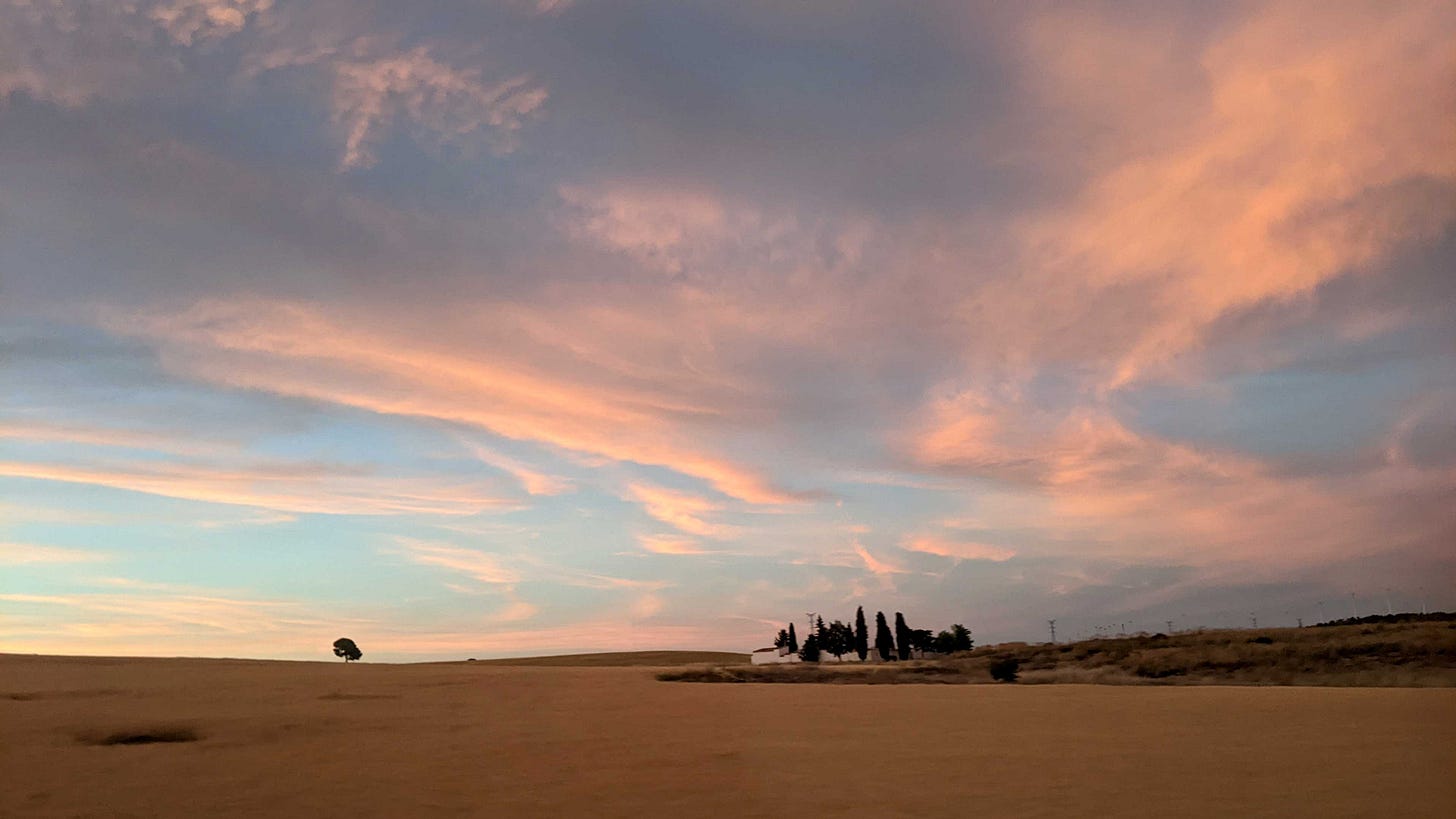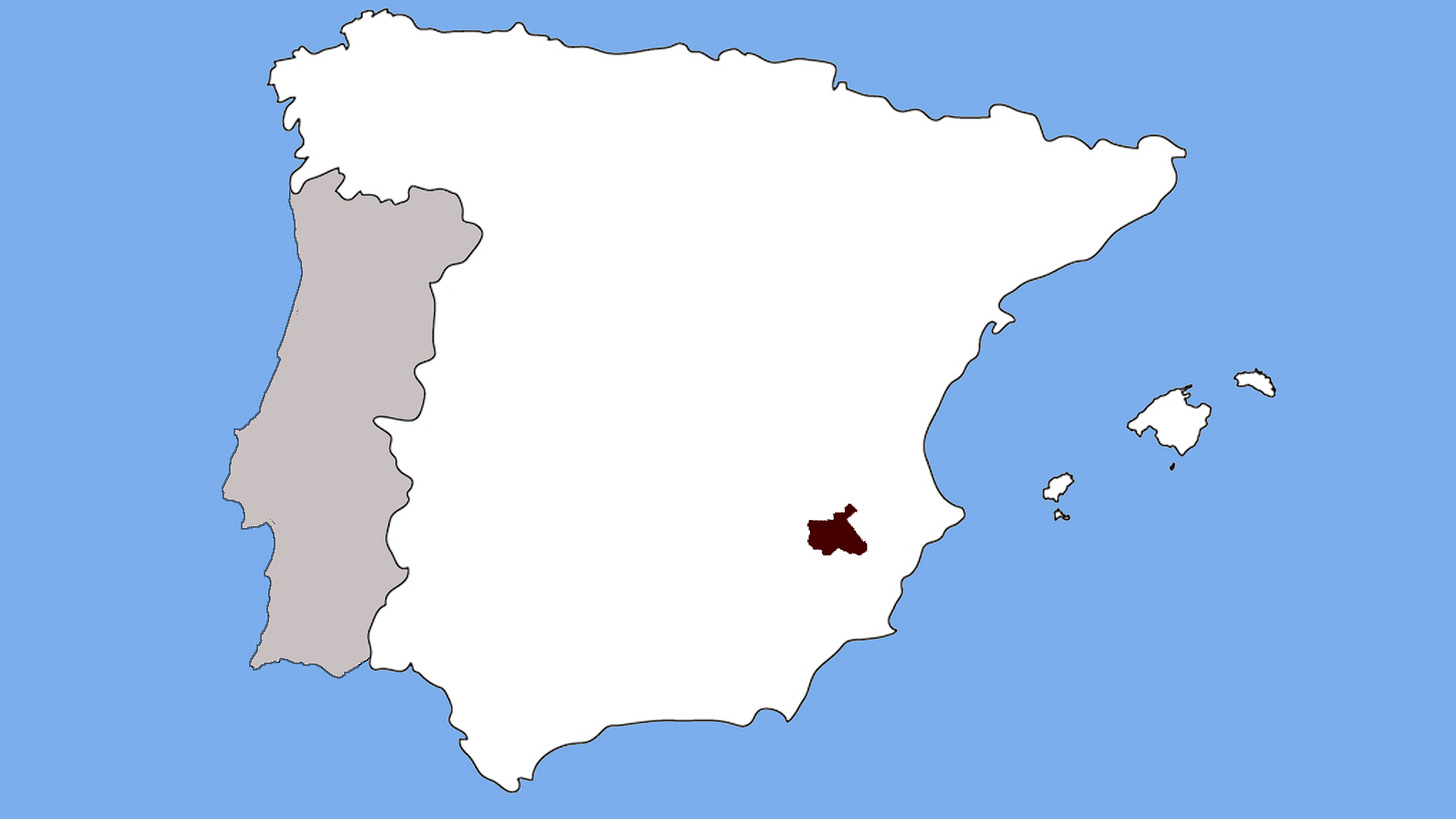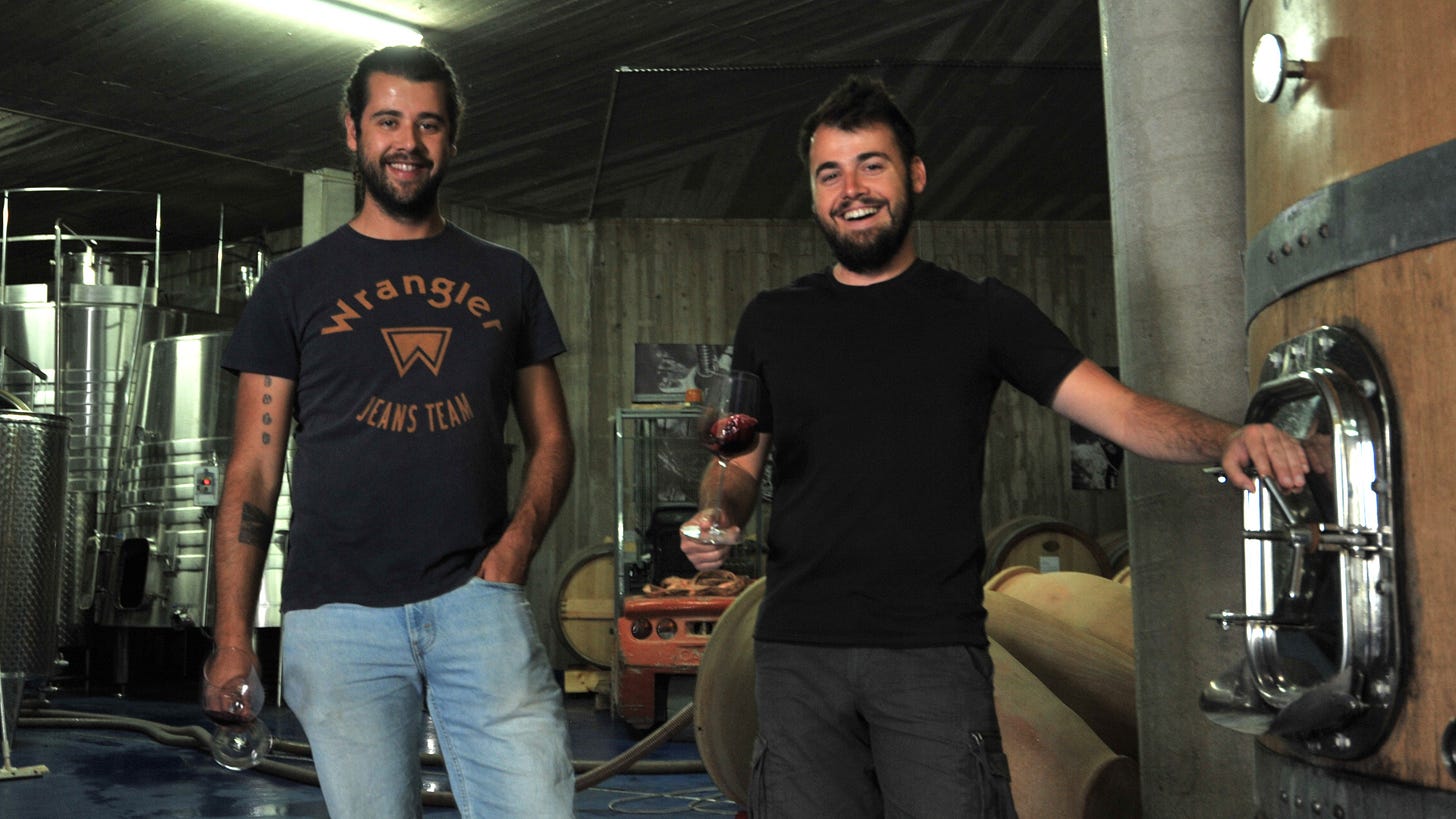You are my sunshine!
In which we take you on a journey to the sunny plains of Jumilla in an attempt to comfort you as the rainclouds continue to do their thing - at least here in Spain.
We’ve been seeing a touch of rain in Spain over the last few weeks. Which is great for the reservoirs, but not so good if you’re here for the sun. But never fear, because no matter what the weather, there’s always wine to help keep the clouds at bay. So this week, we thought we’d take you on a trip to a part of Spain where the sun always shines (well, not really, but allow us some poetic licence!), the grapes are ripe, and the wines are bold and hearty.
Welcome to Jumilla.
Jumilla sits in the southeast of Spain. It’s not the most famous winemaking part of the country, but here you’ll find several Denominaciónes de Origen like Bullas, Yecla, and Mancuela, which make this part of Spain a great place for genuine wine lovers to explore.
The DO of Jumilla covers about 27,000 hectares of vineyard in south east Spain. Straddling the northern corner of the region of Murcia and spilling over into the province of Albacete in the bottom right-hand corner of Castilla La Mancha, it’s a hot, dry region which is famous for its quite strong, full-bodied red wines made from the Monastrell grape which covers 70% of the vineyard area.
Historically, Jumilla has always exported a lot of its wine. Southern Spain has been on the wine map going all the way back to the Phoenicians – for one very good reason. All that southern coastline was great for trade. In the second and third centuries BC, Mediterranean ports in Catalunya and Valencia were key exporters of wine to Rome, and that influence persists today. The grape variety Monastrell is known as Mourvèdre in France and derives its name from Murviedro, which is what the Romans used to call the Valencian port which we know today as Sagunto.
In geographical terms, Jumilla sits on the so-called Altiplano Levantino, which is a transition region between the higher, flat plains of La Mancha and the softer landscapes of the Levante. The landscape is one of contrasts, and vines are planted from about 320 metres above sea level in the valleys and up to 900 metres above sea level at the highest points.
Although the Mediterranean is quite close by – Albacete is 100km away as the crow flies - Jumilla’s climate is predominantly continental. Winters are cold with temperatures below zero, while in the summer it’s not uncommon for the mercury to get above 40º. It is sunny and dry, with about 3,000 hours of sun a year and quite low rainfall (about 300mm/year), although rains can be quite torrential sometimes in spring and late summer/early autumn.
The main grape here is Monastrell, a popular variety grown throughout the Levante. It ripens late, which is perfect in a hot climate, and it adapts very well to different soil types. It has small, quite sweet, thin-skinned berries which are good at recovering from spring frosts, which we can get a lot of in Spain. Monastrell gives intense, full-bodied red wines loaded with lots of rich dark fruit, aromatic herbs, spice and liquorice. It also has pretty good acidity which helps it to age, but it can sometimes be prone to reductive, slightly sulphurous aromas when you first open a bottle, so it’s a wine that can benefit from a bit of air before serving.
If you’re looking for an example of great wine from the region, you can’t go wrong with anything coming out of Bodegas Cerrón. Bodegas Cerrón is a family project run by siblings Juanjo and Carlos Cerdán. The fourth generation in a family of local winegrowers and winemakers, these young chaps use traditional organic and biodynamic methods that have been handed down through the generations, to preserve the history of the region and respect the natural vegetation of the landscape.
Carlos and Juanjo Cerdán at Bodegas Cerrón
They work primarily with small plots of pre-phylloxera vines – from 70 to 100 years old - grown at altitudes of between 850 - 900m above sea level. The plots tend to have cooler north or north-westerly orientations, and benefit from shallow limestone soil with a clay base that helps inject a lot of freshness to the wines. Dedicated to making wines that are as expressive of the local area and geography as possible, the team like to separate all the grape varieties at harvest time, making micro-vinifications by plot that then go on to be bottled as estate, site or plot wines.
The results are exceptional – direct, vertical wines filled with personality that combine Mediterranean character and complexity with a delicate freshness. If you’re looking to dip your toe in the water, try their entry level El Tiempo Que Nos Une, a young Monastrell wine filled with fresh fruit flavours and a lovely balsamic touch to balance the sweetness of the fruit. It’s bright, enticing and eminently drinkable - and an absolute bargain at around €9.50 a bottle here in Spain.
At the other end of the scale you’ve got La Calera del Escaramujo. Made from 95% Monastrell with a touch of Blanquillo, this is an exquisite red wine that perfectly balances elegance with character. The grapes come from a pre-phylloxera vineyard that sits 960m above sea level and sat abandoned for 20 years. But since 2013 the team have been bringing this plot back to life, and it’s now producing wines bursting with violets, lavender and orange blossom, combined with fine tannins and a subtly saline finish. At €70 a bottle, it’s not an every-day drinker, but if you do manage to open a bottle, you’ll certainly remember the day you did.
In between, the boys offer a range of excellently made, exceptionally drinkable, and reasonably accessible wines that represent everything that’s great about modern Spanish wine making. And they are an excellent route into this delightful corner of Spain. If you do happen to see a bottle on the shelf of your local wine merchant, I strongly recommend you grab it while you have the chance. And if you’re not that fortunate, then take a glance at the other wines from Jumilla. They will invariably conjure up the warmth of this beautiful region, and are sure to wipe away the clouds on any rainy day.
Cheers!






